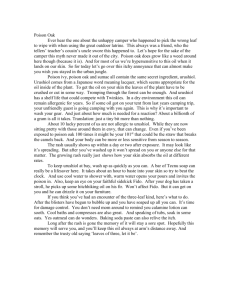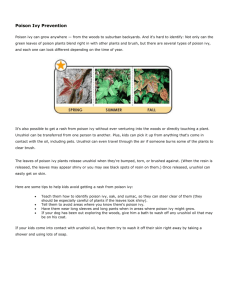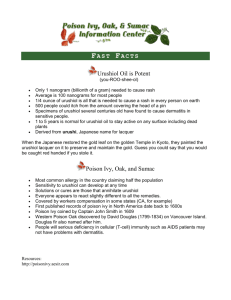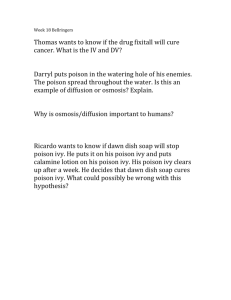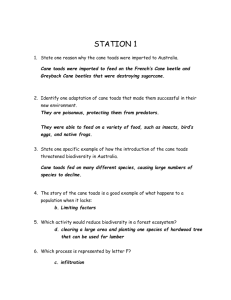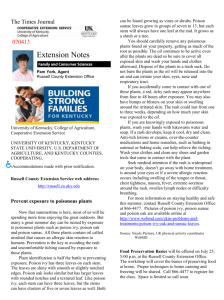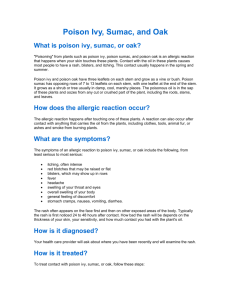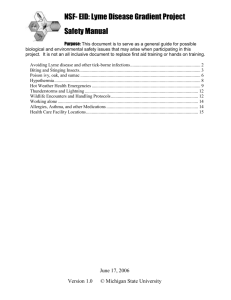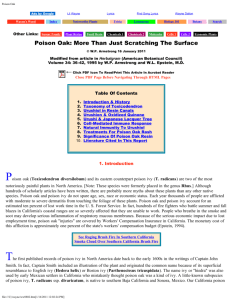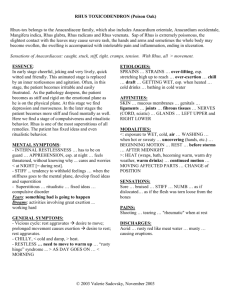Poison Ivy
advertisement
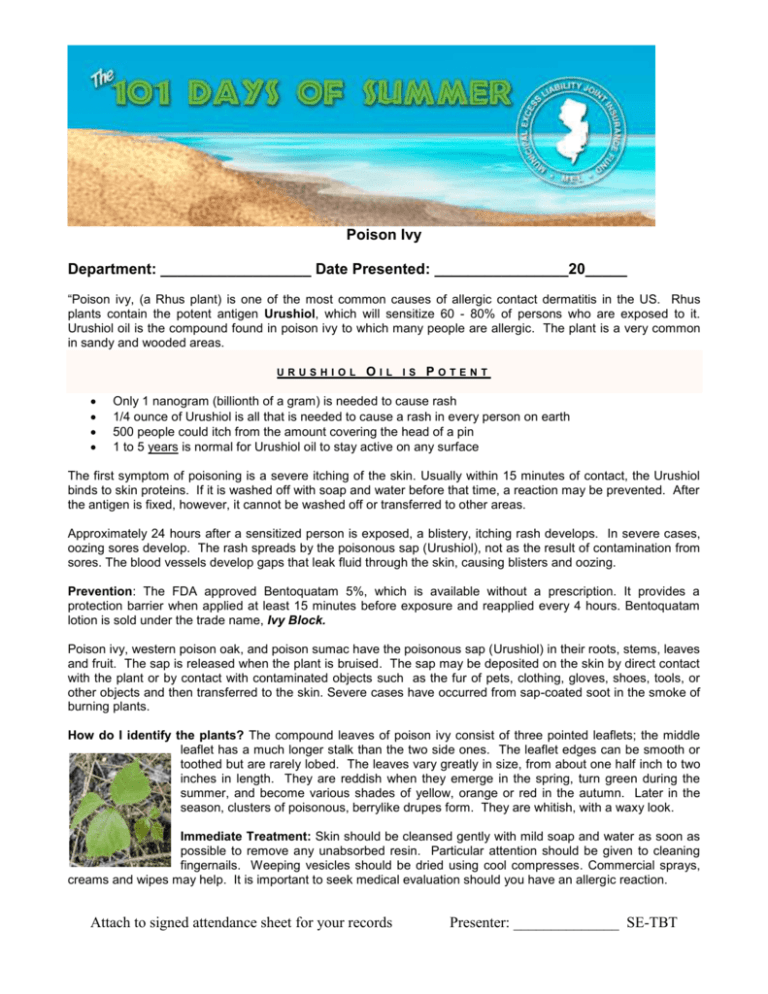
Poison Ivy Department: __________________ Date Presented: ________________20_____ “Poison ivy, (a Rhus plant) is one of the most common causes of allergic contact dermatitis in the US. Rhus plants contain the potent antigen Urushiol, which will sensitize 60 - 80% of persons who are exposed to it. Urushiol oil is the compound found in poison ivy to which many people are allergic. The plant is a very common in sandy and wooded areas. URUSHIOL OIL IS POTENT Only 1 nanogram (billionth of a gram) is needed to cause rash 1/4 ounce of Urushiol is all that is needed to cause a rash in every person on earth 500 people could itch from the amount covering the head of a pin 1 to 5 years is normal for Urushiol oil to stay active on any surface The first symptom of poisoning is a severe itching of the skin. Usually within 15 minutes of contact, the Urushiol binds to skin proteins. If it is washed off with soap and water before that time, a reaction may be prevented. After the antigen is fixed, however, it cannot be washed off or transferred to other areas. Approximately 24 hours after a sensitized person is exposed, a blistery, itching rash develops. In severe cases, oozing sores develop. The rash spreads by the poisonous sap (Urushiol), not as the result of contamination from sores. The blood vessels develop gaps that leak fluid through the skin, causing blisters and oozing. Prevention: The FDA approved Bentoquatam 5%, which is available without a prescription. It provides a protection barrier when applied at least 15 minutes before exposure and reapplied every 4 hours. Bentoquatam lotion is sold under the trade name, Ivy Block. Poison ivy, western poison oak, and poison sumac have the poisonous sap (Urushiol) in their roots, stems, leaves and fruit. The sap is released when the plant is bruised. The sap may be deposited on the skin by direct contact with the plant or by contact with contaminated objects such as the fur of pets, clothing, gloves, shoes, tools, or other objects and then transferred to the skin. Severe cases have occurred from sap-coated soot in the smoke of burning plants. How do I identify the plants? The compound leaves of poison ivy consist of three pointed leaflets; the middle leaflet has a much longer stalk than the two side ones. The leaflet edges can be smooth or toothed but are rarely lobed. The leaves vary greatly in size, from about one half inch to two inches in length. They are reddish when they emerge in the spring, turn green during the summer, and become various shades of yellow, orange or red in the autumn. Later in the season, clusters of poisonous, berrylike drupes form. They are whitish, with a waxy look. Immediate Treatment: Skin should be cleansed gently with mild soap and water as soon as possible to remove any unabsorbed resin. Particular attention should be given to cleaning fingernails. Weeping vesicles should be dried using cool compresses. Commercial sprays, creams and wipes may help. It is important to seek medical evaluation should you have an allergic reaction. Attach to signed attendance sheet for your records Presenter: ______________ SE-TBT
